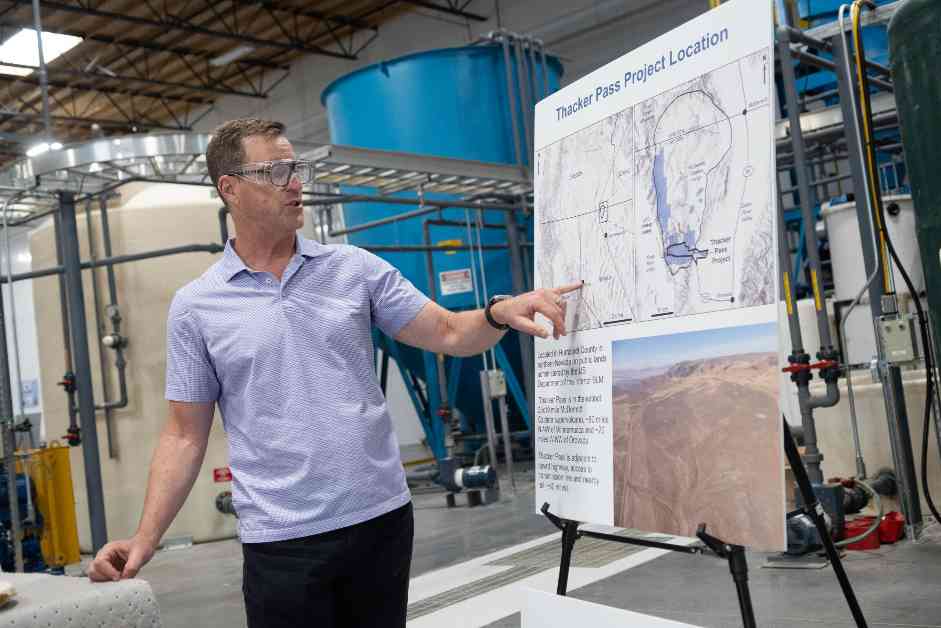The Inflation Reduction Act (IRA) has been a game-changer for Nevada since its passage by President Joe Biden two years ago. This landmark, multibillion-dollar law has made the biggest climate investment in American history, sparking unprecedented federal dollars, private investment, and job creation in the state. One of the significant impacts of the IRA is the influx of capital into the clean energy sector, particularly in the lithium and solar industries. With provisions for tax credits, grants, and funding for clean energy projects, the IRA has set the stage for Nevada to become a leader in the shift towards clean transportation and renewable energy sources.
Impact on Nevada’s Clean Energy Industry
The IRA has provided economic certainty for companies operating in the clean energy sector. Companies like Lithium Americas and Redwood Materials have benefited from the law’s tax credits and funding opportunities, leading to significant investments in the electric vehicle, battery, and clean power industries in Nevada. The state has seen a surge in clean energy job creation, with nearly 20,500 new jobs announced since the passage of the IRA, primarily in the battery sector. Projects like the Unimacts factory in Las Vegas and the Reid Gardner Battery Energy Storage System northeast of Las Vegas have thrived due to IRA incentives, showcasing the law’s immediate impact on Nevada’s clean energy economy.
Challenges and Opportunities for Workforce Development
While the IRA has spurred growth in the clean energy sector, Nevada faces challenges in workforce development to meet the demands of the burgeoning industry. Skilled workers are needed for rooftop solar installations, battery recycling, and other clean energy technologies eligible for IRA tax credits. The state’s clean energy industry is growing rapidly, but workforce development efforts are crucial to ensure a sustainable transition to renewable energy sources. Nevada must invest in training programs and education pipelines to prepare its workforce for the jobs of the future in the clean energy sector.
Governor Joe Lombardo’s Approach to Clean Energy
Governor Joe Lombardo has embraced an “all-of-the-above” energy approach, advocating for a balance between renewable energy sources and traditional fuels. While Nevada lacks significant oil and natural gas reserves, it boasts abundant solar, geothermal, and other renewable energy sources. The state has continued to apply for federal grants and incentives to attract clean energy developers and manufacturers. Lombardo’s administration aims to decarbonize the state’s energy sector while maintaining a business-friendly environment that attracts investment and promotes economic growth.
The Role of Republicans in Clean Energy Policy
Despite the positive impacts of the IRA on Nevada’s clean energy industry, Republicans have expressed opposition to the law’s provisions, citing concerns about government spending, energy strategy, and potential impacts on energy prices. The GOP’s stance on clean energy policy could have significant implications for the future of the IRA and its benefits for Nevada. While some Republican lawmakers, like Rep. Mark Amodei, have acknowledged the job creation and investments brought by the IRA, others have called for repealing clean energy tax credits and funding if they gain control of Congress in 2025.
Voter Education and Political Mobilization
As the 2024 election approaches, Democrats and environmental advocates face the challenge of convincing voters of the long-term benefits of the IRA and the importance of protecting clean energy incentives. Voter education efforts focus on highlighting the economic advantages of clean energy investments, job creation, and energy savings for Nevada residents. Organizers are working with unions and industry groups to mobilize support for clean energy policies and workforce development initiatives. The fate of the IRA hinges on Democrats’ ability to convey its transformational impact to voters and secure continued support for clean energy initiatives.
Conclusion
The Inflation Reduction Act has had a profound impact on Nevada’s clean energy industry, driving job creation, investment, and economic growth in the state. While challenges remain in workforce development and political opposition to clean energy policies, the IRA has laid the foundation for Nevada to become a leader in renewable energy and clean transportation. As the state navigates the complex landscape of energy transition and economic transformation, continued support for clean energy initiatives is vital to realizing the full potential of the IRA and securing a sustainable future for Nevada’s clean energy economy.

